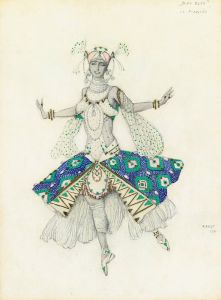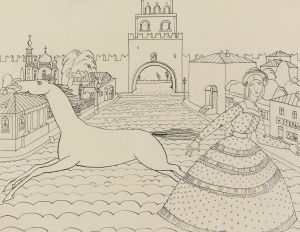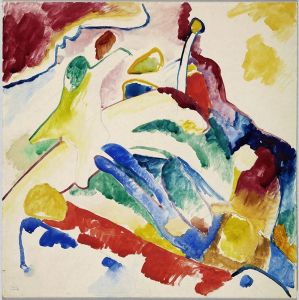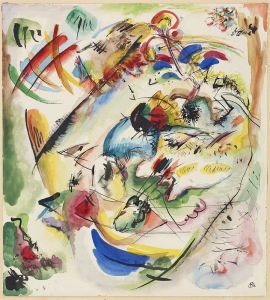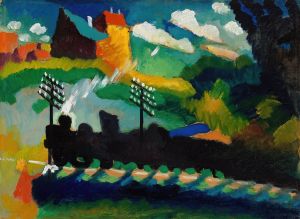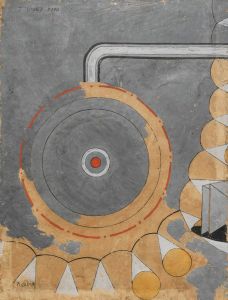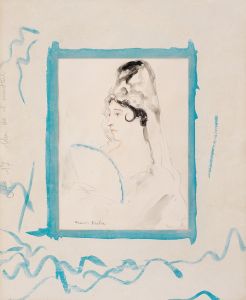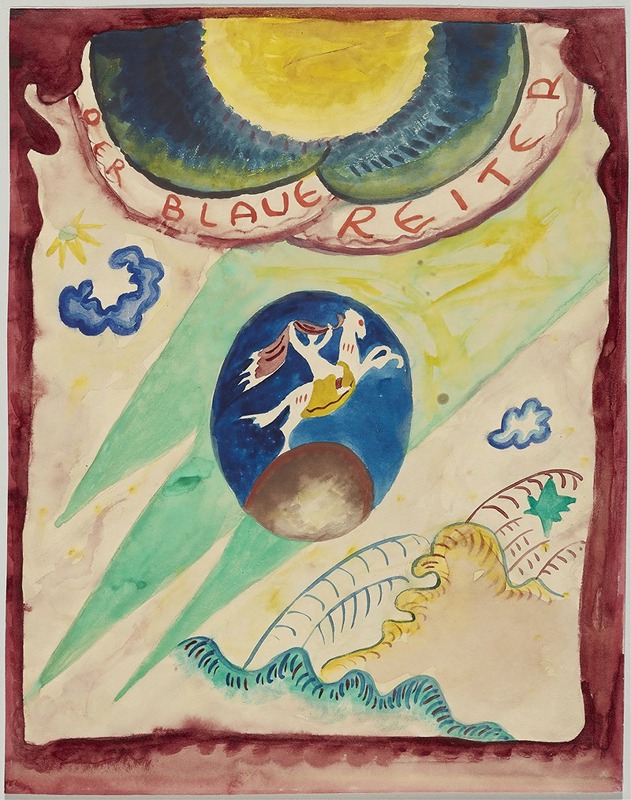
Design for the cover of the almanac ‘The Blue Rider’ III
A hand-painted replica of Wassily Kandinsky’s masterpiece Design for the cover of the almanac ‘The Blue Rider’ III, meticulously crafted by professional artists to capture the true essence of the original. Each piece is created with museum-quality canvas and rare mineral pigments, carefully painted by experienced artists with delicate brushstrokes and rich, layered colors to perfectly recreate the texture of the original artwork. Unlike machine-printed reproductions, this hand-painted version brings the painting to life, infused with the artist’s emotions and skill in every stroke. Whether for personal collection or home decoration, it instantly elevates the artistic atmosphere of any space.
Wassily Kandinsky, a pioneer of abstract art, created the cover design for the almanac "The Blue Rider" (Der Blaue Reiter) in 1911. This almanac was a seminal publication in the expressionist movement and was co-edited by Kandinsky and Franz Marc. The Blue Rider group, named after this almanac, was an informal association of artists united in their opposition to the prevailing academic standards and their shared interest in new forms of artistic expression.
The cover design by Kandinsky is a striking example of his early abstract work. It features a dynamic composition of geometric shapes and vibrant colors, reflecting his interest in the spiritual and emotional power of art. Kandinsky believed that color and form could express profound spiritual truths and sought to create works that would resonate on a deep, emotional level with viewers.
The Blue Rider almanac itself was a collection of essays, artworks, and musical scores that reflected the group's diverse interests and their commitment to breaking down the barriers between different art forms. It included contributions from a wide range of artists, musicians, and writers, including Arnold Schoenberg, August Macke, and Paul Klee. The almanac was intended to be a platform for the exchange of ideas and a showcase for the latest developments in modern art.
Kandinsky's cover design for the almanac is characterized by its bold use of color and abstract forms. The composition is dominated by a large blue circle, which is intersected by various lines and shapes in red, yellow, and black. This use of geometric forms and primary colors is typical of Kandinsky's work during this period and reflects his interest in the synesthetic relationship between color and music. He believed that colors could evoke specific emotions and that the arrangement of forms could create a sense of rhythm and harmony, much like a musical composition.
The Blue Rider almanac was published in Munich in 1912 and had a significant impact on the development of modern art. It helped to establish the Blue Rider group as a major force in the avant-garde movement and provided a platform for the dissemination of their ideas. The almanac's emphasis on the spiritual and emotional dimensions of art, as well as its rejection of traditional artistic conventions, resonated with many artists and helped to pave the way for the development of abstract art.
Kandinsky's cover design for the almanac remains an iconic example of early 20th-century abstract art. It exemplifies his belief in the transformative power of art and his commitment to exploring new forms of artistic expression. The Blue Rider almanac, with its innovative design and groundbreaking content, continues to be celebrated as a landmark publication in the history of modern art.





